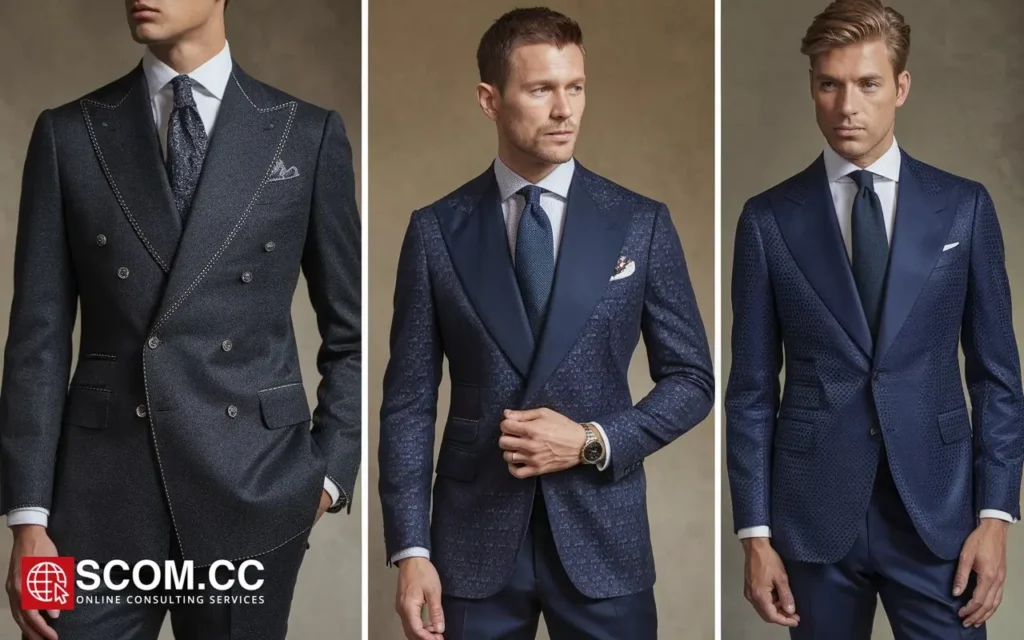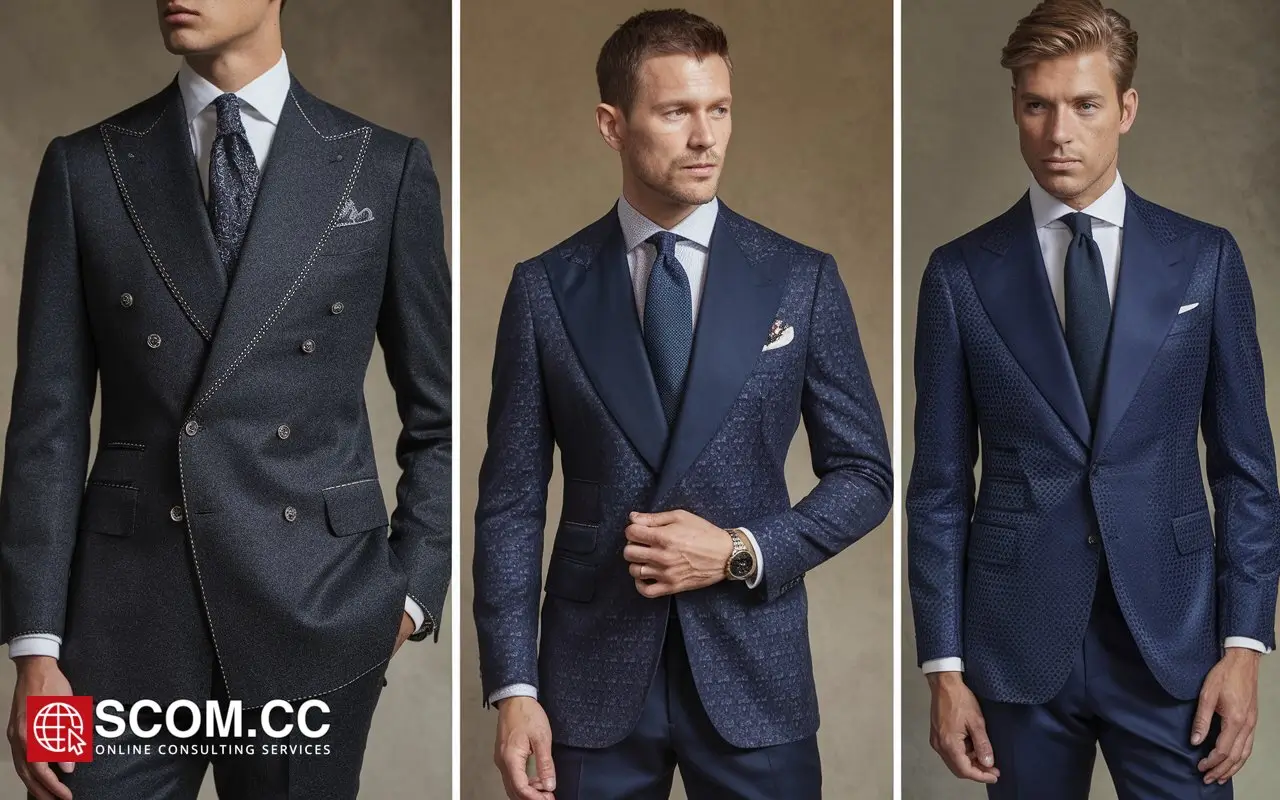What Are the Top Mistakes to Avoid When Creating Unique Tailoring Projects?

- What Are the Top Mistakes to Avoid When Creating Unique Tailoring Projects?
- Neglecting Accurate Measurements
- Ignoring Fabric Quality and Suitability
- Overcomplicating Design Elements
- Failing to Communicate Clearly with Clients
- Overlooking Prototyping and Fittings
- Underestimating the Impact of Finishing Touches
- Neglecting Market Trends and Client Preferences
- Ignoring Budget Constraints
-
FAQ
- 1. Why are accurate measurements so important in tailoring?
- 2. How can I choose the right fabric for my custom garment?
- 3. What is the impact of overcomplicating design elements?
- 4. How can effective communication with clients improve tailoring projects?
- 5. Why is prototyping important in the tailoring process?
- 6. What role do finishing touches play in the quality of a garment?
- 7. How can I manage budget constraints effectively in tailoring projects?
- Conclusion
What Are the Top Mistakes to Avoid When Creating Unique Tailoring Projects?
Creating unique tailoring projects requires skill, creativity, and attention to detail. However, even seasoned tailors can encounter pitfalls that hinder their designs or compromise the final product. Avoiding common mistakes is crucial for producing exceptional and bespoke garments that meet both stylistic and functional expectations. This article outlines the top mistakes to avoid when embarking on unique tailoring projects and provides practical advice to ensure success.
Neglecting Accurate Measurements
Importance of Precision
Accurate measurements are fundamental to tailoring. Neglecting this step can result in poorly fitting garments that fail to flatter the wearer. Ensure all measurements are taken meticulously, considering factors such as body shape, posture, and movement. Use professional measuring tools and techniques to capture precise dimensions.
Adapting for Individual Fit
Every individual has unique proportions and preferences. Customize measurements to accommodate specific client needs, such as height variations, body shape, and comfort levels. Avoid relying solely on standard sizing; instead, tailor the measurements to ensure a perfect fit.
Ignoring Fabric Quality and Suitability
Choosing the Right Fabric
Fabric choice significantly impacts the look, feel, and functionality of a garment. Avoid selecting fabrics solely based on appearance; consider factors such as drape, texture, and durability. For example, a stiff wool may be ideal for structured suits, while a flowing silk suits more fluid designs.
Testing Fabric Performance
Before finalizing fabric selection, conduct tests to evaluate its performance. Assess aspects such as colorfastness, shrinkage, and wear and tear. This ensures the fabric will hold up well over time and maintain its intended appearance.
Overcomplicating Design Elements
Balancing Complexity and Wearability
While creativity is essential, overcomplicating design elements can result in impractical or uncomfortable garments. Strive for a balance between unique design features and wearability. Ensure that intricate details, embellishments, or complex patterns do not hinder the garment’s functionality or comfort.
Streamlining Design Concepts
Keep the design concept clear and focused. Avoid incorporating too many disparate elements that can clutter the garment or detract from its overall aesthetic. Prioritize key design features and ensure they enhance rather than overwhelm the final piece.
Failing to Communicate Clearly with Clients
Understanding Client Expectations
Effective communication with clients is crucial for successful tailoring projects. Failing to understand their vision, preferences, or requirements can lead to unsatisfactory results. Engage in detailed consultations to gather information about their desired style, fabric preferences, and any specific needs.
Providing Regular Updates
Keep clients informed throughout the tailoring process. Regular updates on progress, fabric choices, and design decisions help manage expectations and address any concerns early. Transparency and open communication build trust and ensure the final garment aligns with the client’s vision.
Overlooking Prototyping and Fittings
Importance of Prototyping
Creating a prototype or muslin is essential for evaluating fit and design before final production. Skipping this step can result in unforeseen issues that affect the final garment. Use prototypes to test fit, functionality, and design details, making necessary adjustments before moving to the final fabric.
Conducting Multiple Fittings
Multiple fittings are vital for achieving a perfect fit. Avoid rushing through fittings or assuming the initial garment will be flawless. Schedule several fittings to address any adjustments needed for comfort and appearance, ensuring the final garment is tailored to perfection.
Underestimating the Impact of Finishing Touches
Attention to Detail
Finishing touches play a significant role in the overall quality of a garment. Overlooking details such as button placement, seam finishes, and hemming can diminish the garment’s appearance and functionality. Pay close attention to these final elements to ensure a polished and professional finish.
Ensuring Consistency
Maintain consistency in finishing touches across all design elements. Inconsistencies in stitching, fabric alignment, or design details can detract from the garment’s overall quality. Ensure that all components of the garment are meticulously finished and aligned.
Neglecting Market Trends and Client Preferences
Staying Current with Trends
While creating unique garments, it’s important to stay aware of current fashion trends and market demands. Neglecting to consider these trends can result in designs that feel outdated or out of touch. Research current styles and industry trends to inform your design choices and keep your work relevant.
Aligning with Client Preferences
Ensure that designs align with client preferences and lifestyle needs. Avoid imposing personal style preferences if they conflict with what the client desires. Tailor the design process to meet the client’s specific tastes and requirements, ensuring satisfaction with the final product.
Ignoring Budget Constraints
Managing Costs Effectively
Budget management is crucial for successful tailoring projects. Ignoring budget constraints can lead to overspending or compromising on quality. Develop a clear budget plan, considering factors such as fabric costs, labor, and materials. Adhere to the budget while finding ways to optimize costs without sacrificing quality.
Prioritizing Expenditures
Prioritize expenditures based on the project’s needs and objectives. Allocate funds to critical areas such as fabric quality, tailoring expertise, and design elements. Avoid unnecessary expenses that do not contribute to the overall quality or uniqueness of the garment.
What Are the Top Mistakes to Avoid When Creating Unique Tailoring Projects?
Summary Table
| Mistake | Description | Best Practice |
|---|---|---|
| Neglecting Accurate Measurements | Failing to take precise body measurements can result in poor fit. | Use professional tools and consider individual body shape. |
| Ignoring Fabric Quality and Suitability | Choosing inappropriate fabrics affects the garment’s look and durability. | Select fabrics based on drape, texture, and performance. |
| Overcomplicating Design Elements | Excessive complexity can make garments impractical or uncomfortable. | Balance intricate details with wearability. |
| Failing to Communicate Clearly with Clients | Misunderstanding client needs can lead to unsatisfactory designs. | Engage in detailed consultations and provide regular updates. |
| Overlooking Prototyping and Fittings | Skipping prototypes and fittings can result in fit and design issues. | Create prototypes and conduct multiple fittings for adjustments. |
| Underestimating the Impact of Finishing Touches | Neglecting finishing touches affects the overall quality of the garment. | Pay attention to details like button placement and seam finishes. |
| Neglecting Market Trends and Client Preferences | Ignoring trends and client preferences can make designs outdated. | Stay updated on trends and align designs with client preferences. |
| Ignoring Budget Constraints | Failing to manage costs can lead to overspending or quality compromise. | Develop a budget plan and prioritize expenditures effectively. |
FAQ
1. Why are accurate measurements so important in tailoring?
Accurate measurements ensure that the garment fits well and flatters the wearer’s body shape. Precise measurements help tailor the garment to the individual’s proportions, avoiding fit issues and enhancing overall comfort and appearance.
2. How can I choose the right fabric for my custom garment?
Select fabrics based on their drape, texture, and durability. Consider the garment’s intended use and the desired look and feel. Conduct performance tests to evaluate aspects like colorfastness and shrinkage to ensure the fabric suits your design.
3. What is the impact of overcomplicating design elements?
Overcomplicating design elements can make a garment impractical, uncomfortable, or difficult to wear. Strive for a balance between creativity and functionality to ensure that intricate details enhance rather than hinder the overall design.
4. How can effective communication with clients improve tailoring projects?
Clear communication helps understand client expectations, preferences, and needs. Detailed consultations and regular updates ensure that the design aligns with the client’s vision, leading to greater satisfaction and fewer revisions.
5. Why is prototyping important in the tailoring process?
Prototyping allows you to test fit and design elements before final production. It helps identify and address any issues early, reducing the risk of errors and ensuring that the final garment meets the desired specifications.
6. What role do finishing touches play in the quality of a garment?
Finishing touches such as seam finishes, button placement, and hemming contribute to the garment’s overall quality and appearance. Attention to these details ensures a polished, professional look and enhances the garment’s durability.
7. How can I manage budget constraints effectively in tailoring projects?
Develop a clear budget plan and prioritize expenditures based on the project’s needs. Allocate funds to essential areas such as fabric quality and tailoring expertise, and avoid unnecessary costs. Managing the budget effectively ensures that the project remains financially viable without compromising on quality.
Conclusion
Avoiding common mistakes is key to creating successful and innovative tailoring projects. By focusing on accurate measurements, fabric quality, clear communication, and attention to detail, tailors can enhance their craftsmanship and deliver exceptional custom garments. Embrace a balanced approach to design and execution, and ensure that each project meets both client expectations and high standards of quality.

To explore more about tailoring, visit our Blog of Tailoring. If you have any questions or need assistance, go to our contact page. Additionally, you can find more information about tailoring and consulting at this tailoring and consulting portal.

Leave a Reply